By The Numbers: Ranking The Films Of The Texas Chainsaw Massacre Franchise
- Jimmy Palmquist
- Oct 15, 2024
- 12 min read

I absolutely love horror films, though I’m particular to the slasher flicks. This shouldn’t be a surprise to anyone who knows me since I grew up during the genre’s heydey of the 80s. Sadly the form has died a slow painful death, being brought back occasionally with a viable remake.
Don't miss my other By The Numbers franchise breakdowns. Click the links below to read them:
Let me get this out of the way. I am well aware the original title was The Texas Chain Saw Massacre. I'm using "chainsaw" as one word since most of the titles in the franchise use it, plus it's grammatically correct. There, glad we got that out of the way.
I cannot believe this franchise is fifty years old! It still holds up as one of the best slasher horror flicks of all time. The raw brutality and the 'based on a true story' tagline forced audiences to witness sheer terror like never before. Unfortunately, the franchise also suffers from more terrible sequels than any other horror film series in history. In my opinion, it took almost thirty years to make another Texas Chainsaw Massacre that was worth watching!
Today I’d like to rank the nine movies that make up the franchise, from worst to best. My rankings are purely based on my opinion and viewing pleasure. Some I love, others I hate. Most are just there, lacking any kind of originality. I will say the final rankings I thought I had, were not the same as the one you see below. As I wrote about them, I realized I enjoyed some more than I first thought, while others had faults I had forgotten, so had to drop them a bit. I’d love to hear what you, my fellow horror buffs, have to say. So please comment below with what you think of my list!
And without further ado, The Texas Chainsaw Massacre!

The Return of the Texas Chainsaw Massacre (1995) – (aka Texas Chainsaw Massacre: The Next Generation) - From my research, I found that apparently this was Kim Henkel's time to shine with the ultimate version of his original co-creation. He wrote and directed this one all by himself. There is a really good chance that I just missed the point. But then again, so did just about everybody else who saw the film.
The Texas Chainsaw Massacre: The Next Generation is a perplexing entry in the iconic horror franchise. Released in 1995, it attempts to revive the chilling essence of its predecessors but ultimately falls short. The film follows a group of teenagers who encounter the infamous Leatherface and his deranged family in rural Texas.
While it features a unique premise and some over-the-top creepy moments, the execution leaves much to be desired. The plot meanders, lacking the tight pacing and suspense of the original film. Additionally, the characters feel underdeveloped, making it difficult for the audience to connect with their plight or feel invested in their survival. And that's nothing to say about the inclusion of the "Illuminati" type of secret society. That was just plain confusing and weird.
This is the last of the original sequels and by far the worst. To be fair though, I have never seen the original 1995 version that screened at South By Southwest. I have only ever seen the version that Columbia TriStar left sitting on a self for two years and edited down from 105 minutes to 95 minutes. Myth goes that the studio re-released the film in 1997 because it's two stars, Matthew McConaughey and Renee Zellweger, hit it big and they could potentially recoup some of their money. I will admit it's interesting to see them acting in their early days, but it's not enough to make me watch it ever again.
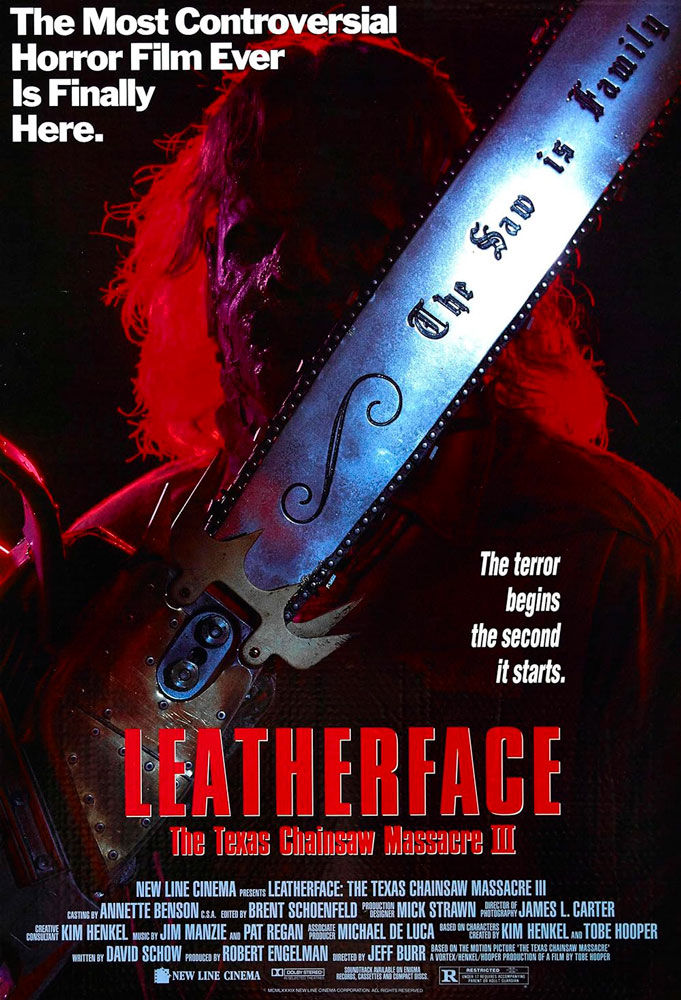
Leatherface: The Texas Chainsaw Massacre III (1990) – This time around, director Jeff Burr and writer David J. Schow attempt to recapture the gritty horror of the original film while introducing some new elements to the franchise. The movie follows a young couple who become trapped in the clutches of Leatherface and his twisted family while on a road trip through Texas.
The history and production of this film are at times more entertaining than the movie itself. New Line Cinema bought the rights to the franchise, and the main man in charge Robert Shaye (best known for bringing Freddy Krueger to life at his studio New Line Cinema) wanted something big. To start, without even having a script or concept, he greenlit a trailer. Admittedly it is one of my favorite previews of all time. Essentially, Leatherface stands by the side of a lake and experiences the myth of the Lady of the Lake from King Arthur lore as she tosses a chainsaw to him. It is beyond ridiculous. It's perfection.
Anywho, despite its efforts, the film struggles to distinguish itself from its predecessors. While it features the same brutal violence and eerie atmosphere that fans expect from the franchise, it fails to offer much in terms of originality or innovation. It also suffered from an X rating, which forced it back to the cutting room where it was edited down to the theatrical version we know today.
One of the film's strengths lies in its practical effects and gruesome kills, which are sure to satisfy gorehounds. However, these moments of shock and gore are undermined by a lackluster plot and thinly drawn characters, making it difficult for the audience to become emotionally invested in their fates. Worst of all, Leatherface: The Texas Chainsaw Massacre III suffers from pacing issues, with long stretches of the film feeling slow and tedious. This, combined with uninspired direction and writing, ultimately results in a forgettable viewing experience.
While the film may hold some appeal for die-hard fans of the franchise or aficionados of '90s horror, it fails to live up to the legacy of the original film and ultimately falls short of leaving a lasting impression. Oh yeah, and perhaps the most memorable part of this entry in the franchise is that it star Viggo Mortensen.
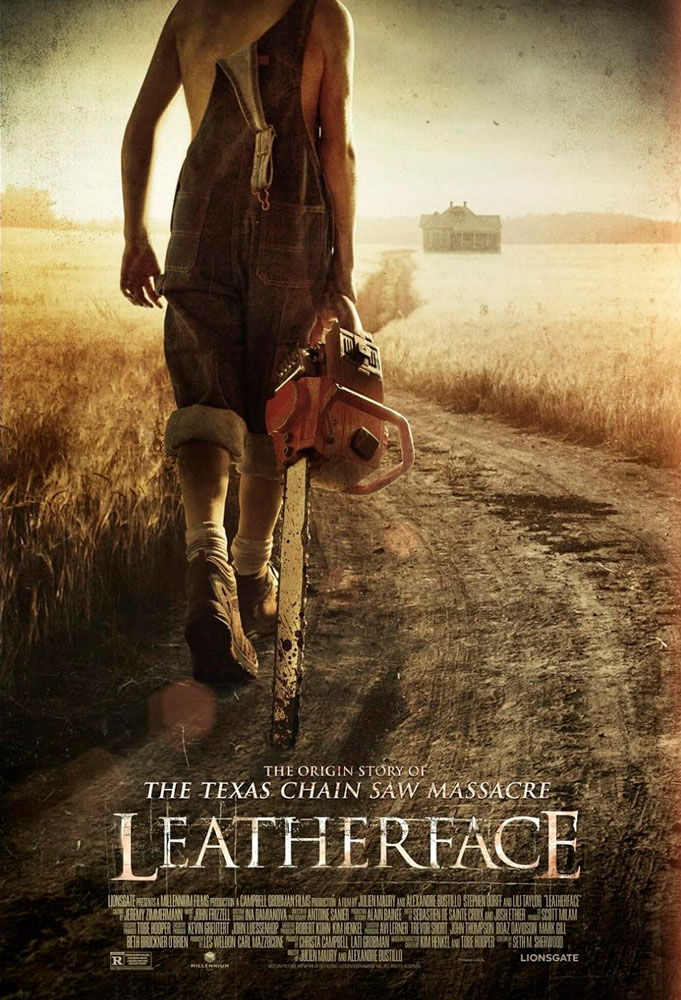
Leatherface (2017) – This time around, the creative team created a prequel to the iconic Texas Chainsaw Massacre series, aiming to delve into the origins of the titular character. Directed by Alexandre Bustillo and Julien Maury, and written by Seth M. Sherwood, the film presents a different take on the franchise, focusing on the early years of Leatherface before he became the notorious killer.
The movie follows a group of teenage inmates who escape from a mental hospital, taking a nurse hostage as they embark on a deadly journey. Along the way, they encounter a deranged family, with a young Leatherface caught in the midst of their twisted world.
Leatherface offers a fresh perspective on the franchise, exploring the psychological and emotional turmoil of its central character. The film benefits from strong performances, particularly from the young actors portraying Leatherface at different stages of his life.
However, despite its attempts to inject new life into the series, Leatherface falls short of its potential. The plot feels disjointed at times, with certain narrative threads left underdeveloped. Additionally, the film tries to return to the original tone but fails to capture the tension, detracting from the overall storytelling.
Ultimately, I liked that Leatherface tried for a different approach to the franchise. I also enjoyed the level of actor they attracted to this project, including Lili Taylor, Finn Jones, and Stephen Dorff. Despite its promising premise and solid performances, it struggles to leave a lasting impression amidst a crowded field of horror offerings and simply becomes another entry in the franchise.
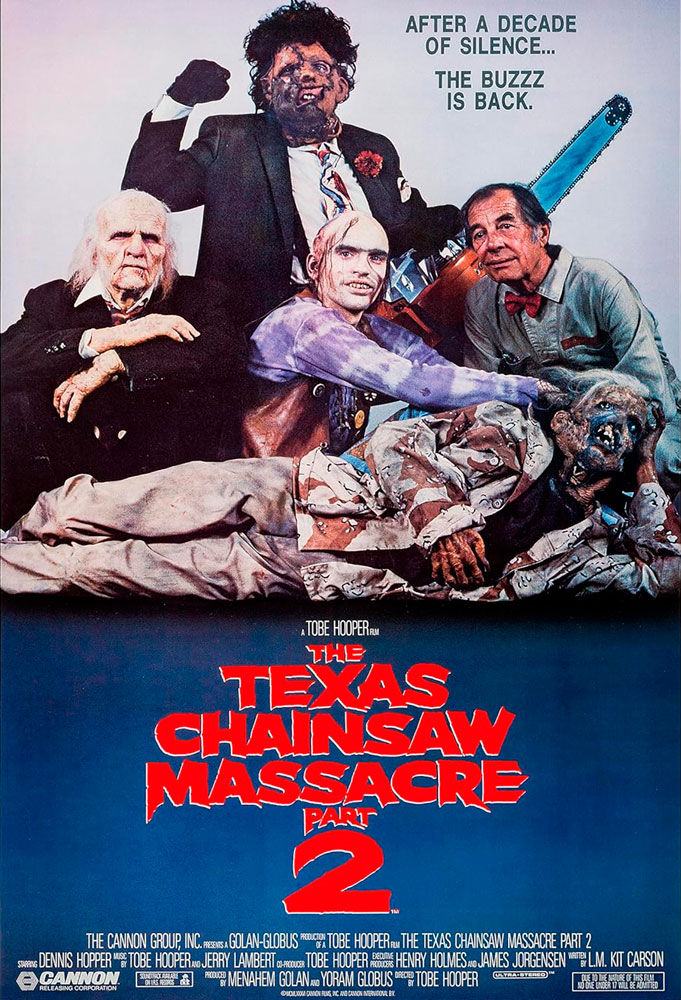
The Texas Chainsaw Massacre 2 (1986) –
For some strange reason, the original creators felt their perfect 1974 film was not what they intended, so they created their own versions of the original concept. You previously read about Henkel's version. It is terrible. This first sequel was apparently Tobe Hooper's need to tell the story he really wanted. In my opinion, the humor he forced into the story did not have the intended affect.
The Texas Chainsaw Massacre 2 is an intriguing departure from its predecessor, offering a unique blend of horror and dark comedy. The film takes a more tongue-in-cheek approach compared to the raw, gritty terror of the original.
Set years after the events of the first film, The Texas Chainsaw Massacre 2 introduces audiences to a new batch of characters, including radio DJ Stretch (Caroline Williams), and Lieutenant "Lefty" Enright (Dennis Hopper), who is determined to put an end to Cook (played again by Jim Siedow), Leatherface (portrayed by Bill Johnson this time around), new addition Chop-Top (Bill Moseley), and the whole cannibalistic family once and for all.
The movie embraces its campy tone, featuring excessive performances and exaggerated gore that border on absurdity. Despite straying from the relentless dread of its predecessor, the film creates a darkly comedic atmosphere that sets it apart from other horror sequels.
However, the shift in tone did not appeal to me in the way the raw terror of the original film did. I found the comedic elements and over-the-top acting to be off-putting from the tension created in the first one. I fully admit that this entry in the franchise offers a unique and entertaining experience for those willing to embrace its campy charm. It's just not for me.
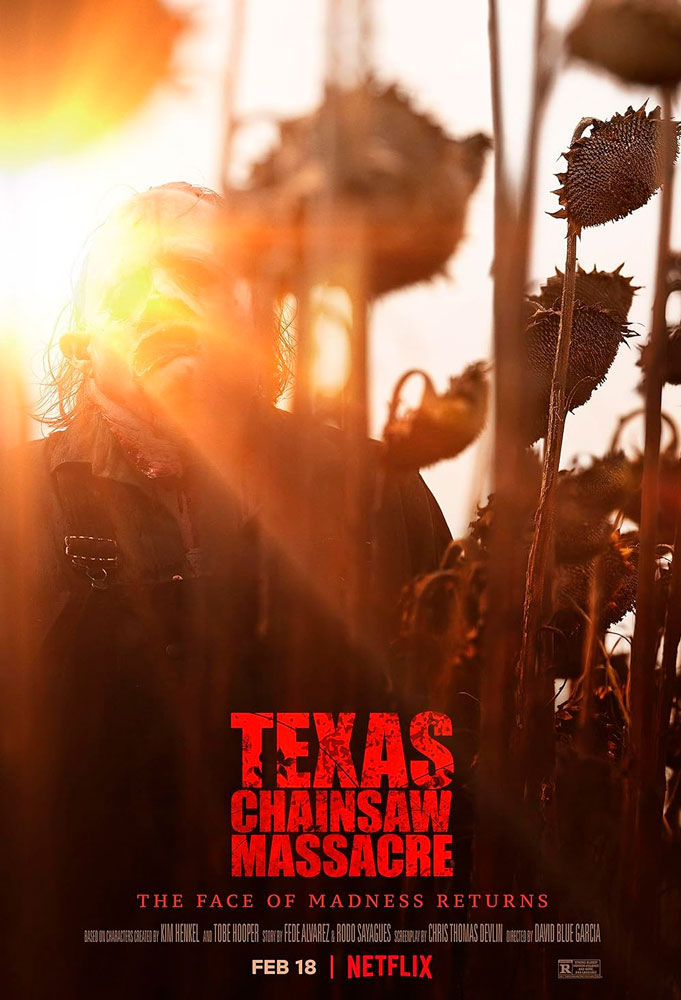
The Texas Chainsaw Massacre (2022) –
This most recent entry in the franchise, now streaming on Netflix, attempts to resurrect the iconic horror franchise with a lot of the modern technologies and social issues we experience on a daily basis. It does not hit the heights of the original, but it definitely offers a worthwhile watch considering the large amount of lackluster sequels that have been made.
The movie centers around Sally Hardesty (played by Olwen Fouéré), the sole survivor from Tobe Hooper’s original 1974 film. Sally has spent years seeking vengeance against the creature who slaughtered her friends. In this iteration, she faces off against the infamous Leatherface (portrayed by Mark Burnham).
Despite promising elements, such as casting Leatherface as a bogeyman in rural Texas and exploring themes of gentrification, the film disappoints. It raises intriguing ideas—like Lila (a school shooting survivor) and social media—but fails to develop them fully. The narrative lacks depth, and the horror lacks impact. The gore is abundant, but the execution lacks creativity. There’s no tension, no suspense, and no characters to truly care about.
In the end, this Texas Chainsaw Massacre feels like a missed opportunity. Leatherface deserves better, and fans of the franchise may find themselves longing for the original’s raw terror.
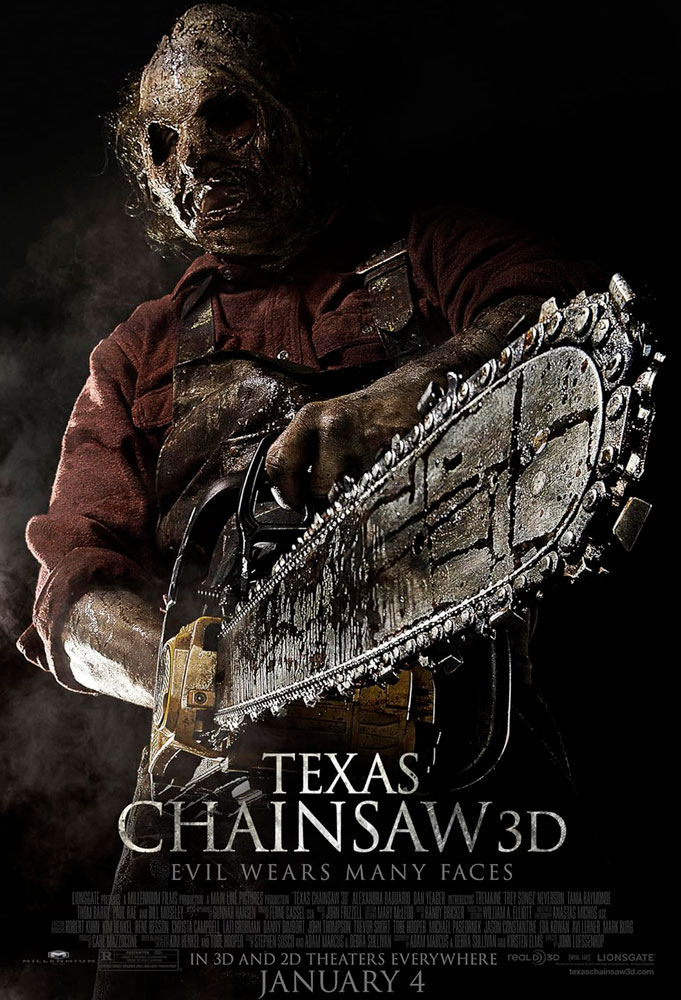
Texas Chainsaw 3D (2013) – I love the concept of this film. After a lot of failed sequels and a couple of successful reboots, director John Luessenhop and writers Adam Marcus, Debra Sullivan, and Kirsten Elms took the franchise back to the original. This entry serves as a direct sequel to the events of the 1974 film.
Texas Chainsaw 3D is a modern take on the classic horror franchise, attempting to capitalize on both nostalgia and contemporary horror trends. Released in 2013, the film ignores the events of its numerous sequels and reboots.
The story picks up decades after the infamous massacre, following a young woman named Heather (played by the intoxicating Alexandra Daddario) who inherits a Texas estate from her grandmother. Upon arriving at her newfound property with her friends, they unwittingly unleash the wrath of Leatherface (Dan Yeager), who still lurks within the dilapidated family home.
One of the film's biggest selling points is the direct continuation of the original movie's storyline and its use of 3D technology, which supposedly added an extra layer of visual depth to the gruesome proceedings. However, I skipped this film in theaters, thus I have never seen the 3D version, so I can't speak to its effectiveness.
Despite its flaws, Texas Chainsaw 3D is enjoyable to watch as it adds to the original story in a fun way. I truly enjoyed the long lost familial connection in hopes of bringing the franchise into the modern era. Plus, we see some familiar faces from earlier films, including Gunnar Hansen (the original Leatherface, now playing Boss Sawyer), Bill Moseley (the original Chop-Top, now playing Drayton Sawyer), and Marilyn Burns (the original Sally Hardesty, now playing Verna). Unlike many of the other sequels, it tries an original storyline in hopes of continuing the Sawyer mythos. However, like many other viewers expecting a worthy successor to the original film, I was disappointed by the final outcome as it ultimately falls short of recapturing the terror and intensity that made the series a horror classic. Despite that, there is still a big part of me that would have loved to see a follow up to this version of the story.
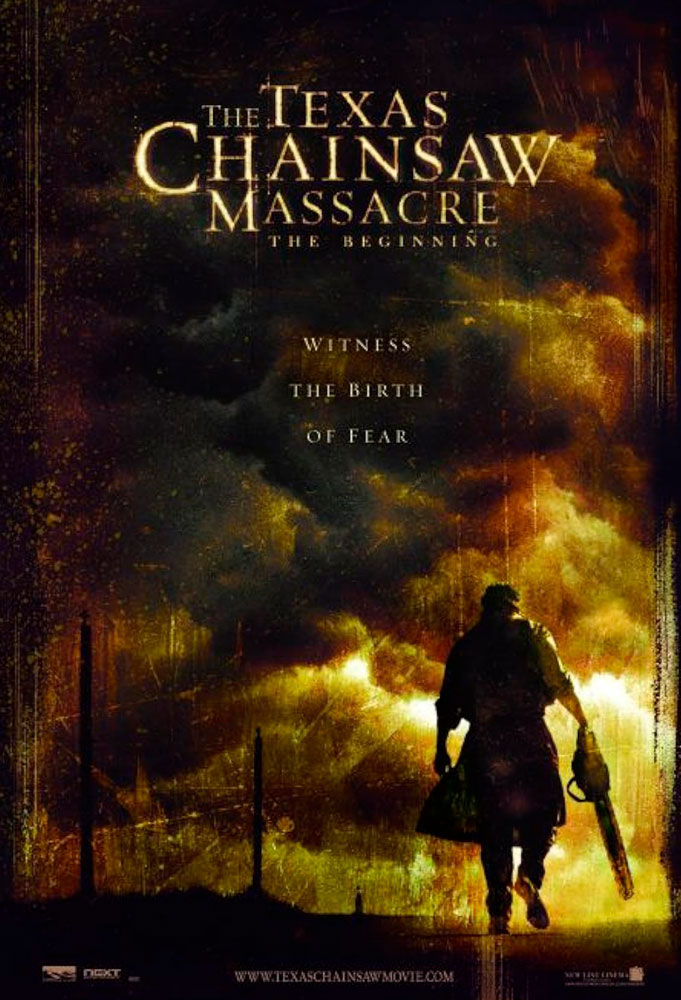
The Texas Chainsaw Massacre: The Beginning (2006) – This entry serves as a prequel to the 2003 remake of the original film, aiming to explore the origins of Leatherface and his family's descent into madness. Directed by Jonathan Liebesman, the film delves into the horrifying backstory of the iconic chainsaw-wielding killer.
Set in 1969, the movie follows a group of young people who encounter a group of sadistic cannibals while on a road trip through rural Texas. As the group becomes ensnared in the depraved family's web of terror, they face unspeakable horrors and fight for survival against Leatherface and his twisted relatives.
Unlike many of the franchise sequels, The Texas Chainsaw Massacre: The Beginning offers some gruesome thrills and effective scares, that captures some of the the raw terror of the original film. The plot does feel formulaic at times, relying heavily on familiar tropes of the horror genre, but it also adds history to the characters we know from the 2003 film.
One of the film's strengths lies in its atmospheric setting and gruesome practical effects, which create a sense of visceral dread throughout. Additionally, the performances from the cast help elevate the material, with standout performances from Jordana Brewster, Matt Bomer, Diora Baird, and of course the return of R. Lee Ermey as Uncle Charlie Hewitt, or better known to us as Sheriff Hoyt.
Don't get me wrong, I'm not saying The Texas Chainsaw Massacre: The Beginning is the greatest horror movie of all time, but when it comes to the TCM films, I enjoy the fresh look at the family and origin story we get about Leatherface and the Hewitts. Which reminds me, I still have no clue why this and the reboot of 2003 changed the family's last name from Sawyer to Hewitt. If you know, hit me up.
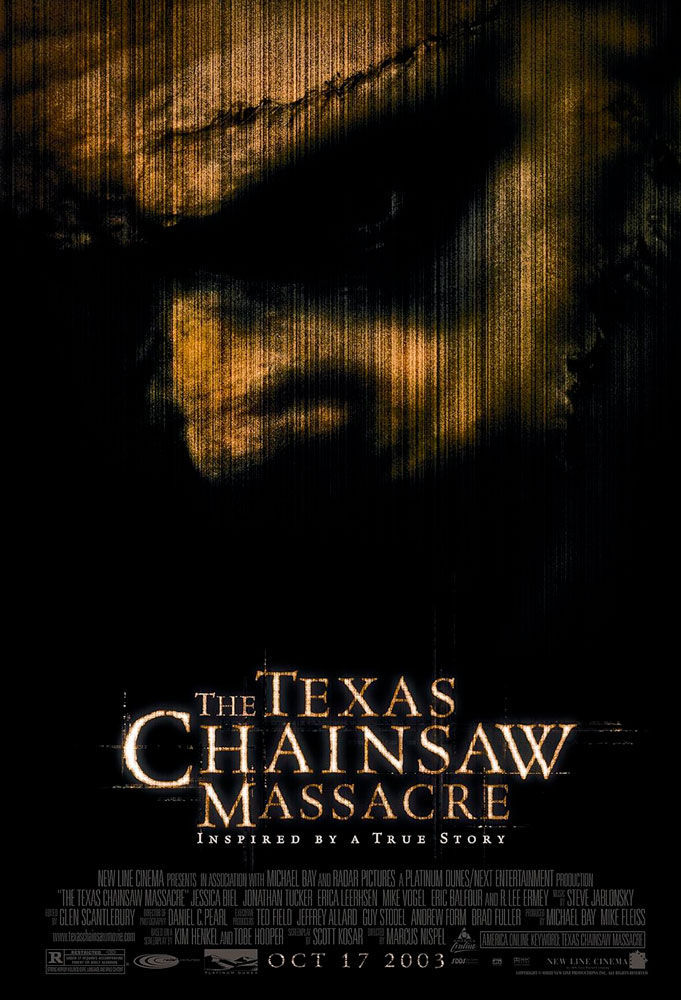
The Texas Chainsaw Massacre (2003) – This entry is a gritty and intense reimagining of the classic horror film that originally debuted in 1974. Directed by Marcus Nispel, this version revitalizes the chilling tale of a group of young people who encounter a family of cannibals in rural Texas. It's also the first and one of the few of the franchise to provide a similar tone and atmosphere of the original.
Set in the early 1970s, the film follows a group of friends on a road trip who find themselves in the clutches of Leatherface and his deranged family after their van breaks down. As they fight for survival, they face unimaginable horrors and gruesome violence at the hands of their sadistic captors.
In my opinion, where other horror franchises have tried and failed, this remake successfully captures the oppressive atmosphere and relentless tension of the original film while infusing it with modern filmmaking techniques. The cinematography creates a sense of dread, and the use of practical effects adds a visceral realism to the terror on screen. Furthermore, the performances from the cast, including Jessica Biel as the resilient protagonist, are solid and convincing, grounding the film in a sense of authenticity despite its horrifying premise. Not to mention the best use of a Leatherface mask to date! Our condolences to Eric Falfour's character Kemper.
Overall, The Texas Chainsaw Massacre from 2003 is a worthy reinterpretation of the horror classic. It pays homage to the original while offering its own spin on the terrifying story, making it a thrilling and chilling experience for both fans of the franchise and newcomers alike.
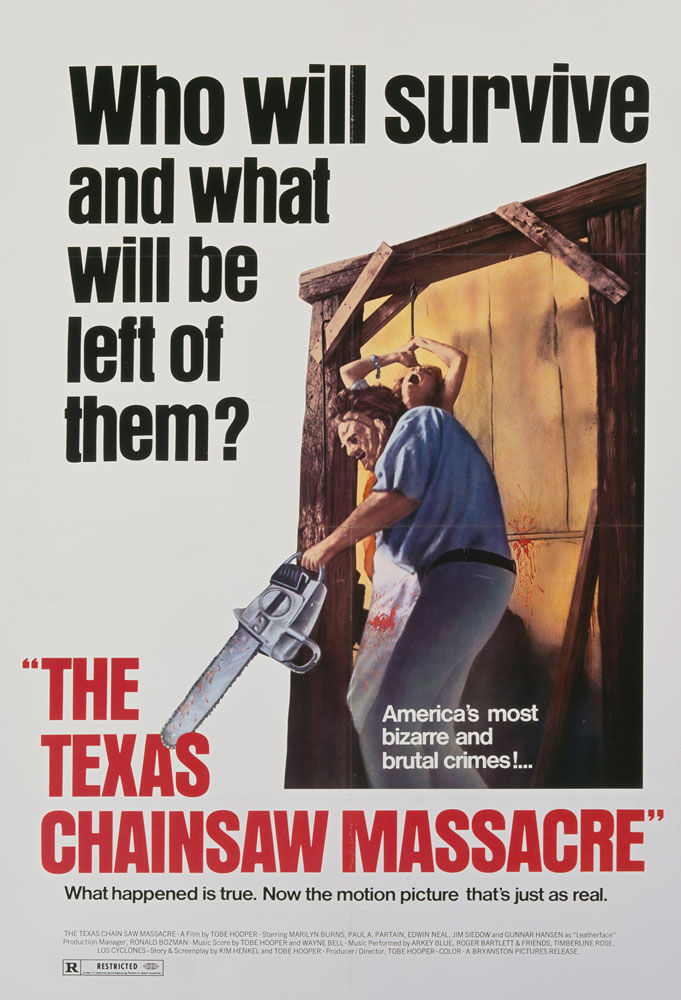
The Texas Chain Saw Massacre (1974) - The original stands as a landmark in horror cinema, revolutionizing the genre with its raw intensity and unrelenting terror. Directed by Tobe Hooper and released in 1974, this low-budget masterpiece remains a benchmark of horror filmmaking.
Set in rural Texas, the film follows a group of friends who encounter the Sawyer family of cannibals, including the iconic chainsaw-wielding killer Leatherface. As they become ensnared in the family's web of horror, they face unspeakable atrocities and fight for survival against unimaginable odds.
What sets The Texas Chain Saw Massacre apart is its gritty realism and visceral impact. Shot on a shoestring budget, the film uses its limitations to its advantage, creating an atmosphere of primal terror that lingers long after the credits roll. The unsettling music and sound effects only add to the anxiety and dread.
Hooper's masterful direction, combined with Daniel Pearl's haunting cinematography and a chilling score, immerses viewers in a nightmarish descent into madness. The film's iconic scenes, including Leatherface's first appearance and the infamous dinner scene, have become indelible moments in cinematic history. And lest we forget, the use of a slaughter hammer to the head for Kirk, a meathook in the back to Pam, and of course the chainsaw into Franklin! Horror abounds!
Moreover, The Texas Chain Saw Massacre is more than just a series of gruesome set pieces; it's a social commentary on the decay of the American Dream and the horrors that lurk beneath the surface of society. It remains a timeless classic that continues to terrify and captivate audiences with its unflinching portrayal of horror. It's essential viewing for any fan of the genre and a testament to the enduring power of independent filmmaking. For my money, this original has never been duplicated in its raw grittiness and serves as one of the original films in the slasher genre.
So there you have it. From start to finish, the The Texas Chainsaw Massacre franchise. Below you'll see my opinions before rewatching the movies. As you can see the only real change was my opinion on The Texas Chainsaw Massacre 2. I do not like the film, but when compared with the other sequels, it actually holds up better than I remembered.
The Texas Chain Saw Massacre - 1974
The Texas Chainsaw Massacre - 2003
The Texas Chainsaw Massacre: The Beginning - 2006
The Texas Chainsaw Massacre - (2022)
Texas Chainsaw 3D - 2013
Leatherface - 2017
Leatherface: The Texas Chainsaw Massacre III - 1990
The Texas Chainsaw Massacre 2 - 1986
The Return of the Texas Chainsaw Massacre - 1995 - (Texas Chainsaw Massacre: The Next Generation)

Comentarios